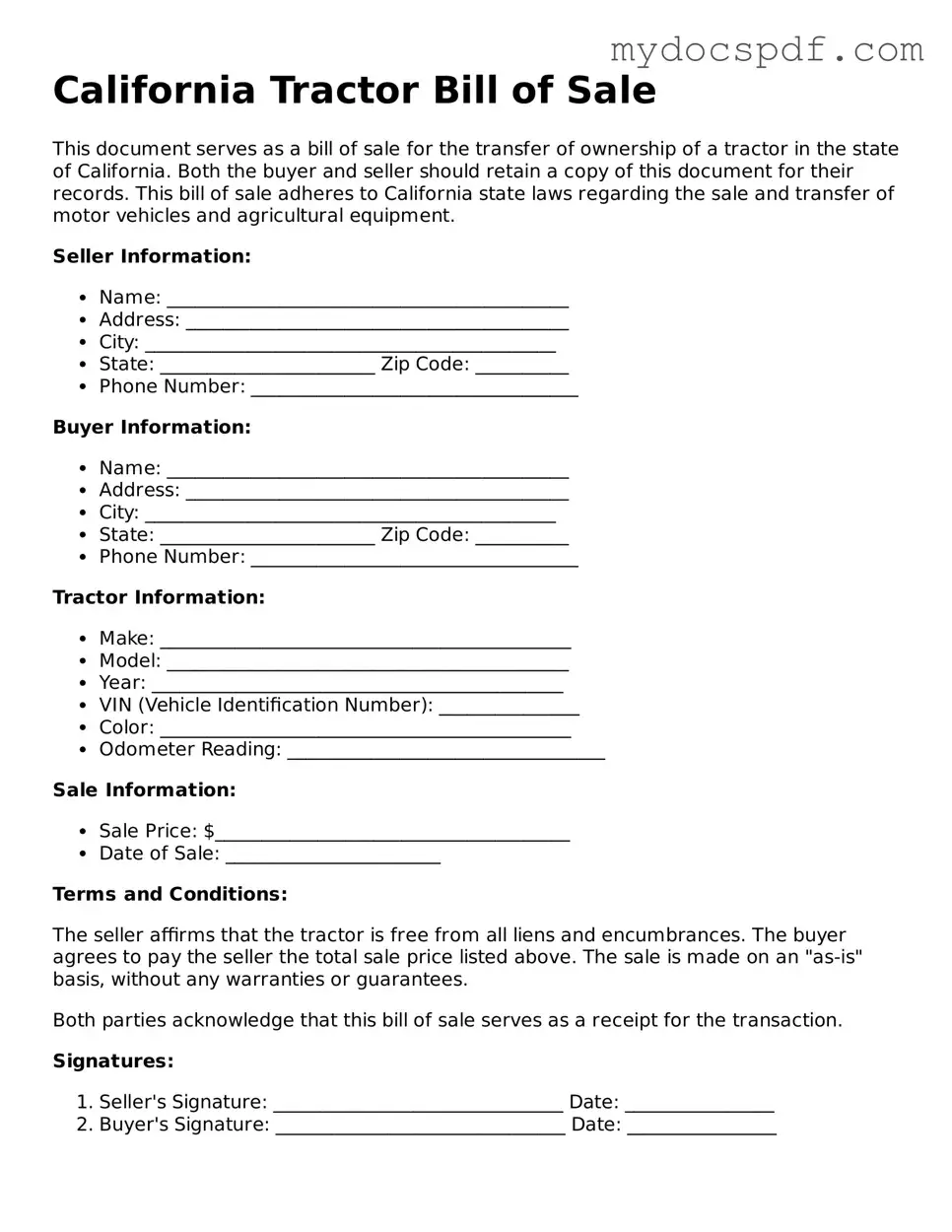Fillable California Tractor Bill of Sale Document
The California Tractor Bill of Sale form is a legal document used to record the transfer of ownership of a tractor from one party to another. This form provides essential details about the transaction, including the buyer's and seller's information, as well as the tractor's specifications. Understanding and properly completing this form is crucial to ensure a smooth transfer and to protect both parties involved.
Access Editor Here
